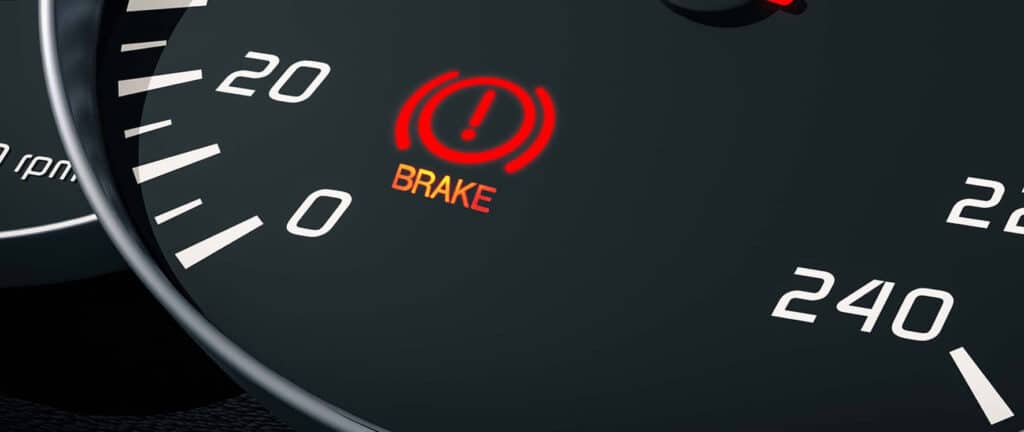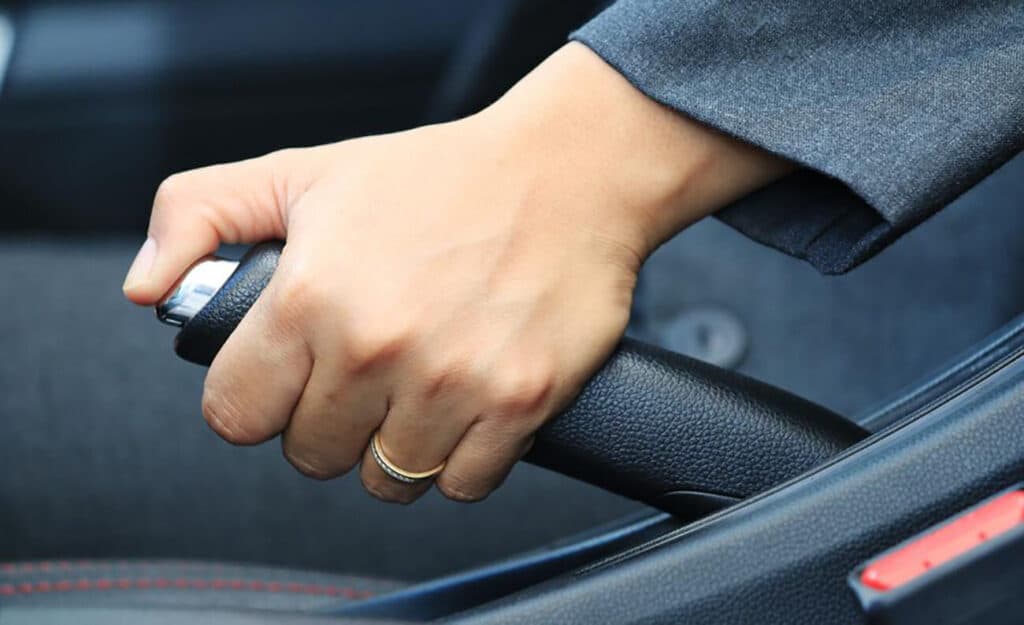Introduction: Holding Steady: Unraveling the Mysteries of the Hand Brake Warning Light
When was the last time you paid attention to your hand brake or park brake warning light? Most of us overlook this tiny beacon, but it’s a fascinating and vital aspect of vehicle maintenance. Fasten your seatbelts as we embark on an informative ride through the intriguing world of brake warning lights.
A Light in the Dark: Understanding Why the Warning Brake Light Comes On
When you engage the handbrake, a series of sensors spring into action, detecting this action like a parent sensing their child’s need. The resulting illumination of the warning light is your car’s way of reassuringly saying, “Hey, I’m holding us steady here!” It’s a mechanical response, yes, but one full of emotion, like a friend’s warm smile in a time of need.
This warning light is more than just a bulb glowing on your dashboard; it’s an intricate communication from your car, reflecting the complexity of the relationship between you and your vehicle. Think of it as a trusty pet giving you a nudge when something needs attention. It ensures that you’re aware of the brake’s position and that you won’t drive away with the brake engaged. Like a well-trained dog that brings you your shoes, it’s there to help, not to annoy. This connection between the car and driver enriches the driving experience and enhances safety.

Decoding the Signals: What the Handbrake Warning Light Really Means
It’s not merely an aesthetic feature; the light is a beacon in the mechanical complexity of modern driving. Much like a weather vane tells you the wind’s direction, this light informs you about the handbrake’s position, whether engaged or disengaged. If everything’s normal, it’s like a green traffic light – all systems go. If the light stays on after disengaging the handbrake, it’s a red signal, a stop sign cautioning you that there might be a more serious issue.
Each signal conveys specific information, guiding your actions to ensure a smooth journey. Ignoring it is like disregarding a storm warning—it might seem trivial initially, but it could lead to complications. For example, the persistent light could indicate wear in the brake system, leakage, or other potentially dangerous malfunctions. Like ignoring a cough that turns into a severe cold, neglecting this warning could lead to more severe problems down the road. In such cases, trusting a professional service to diagnose and treat the problem is like seeking a doctor when ill – it’s the wise choice for your car’s health.
A Quick Fix: Resetting the Parking Brake Warning and When to Do It
Here’s a detailed guide to resetting the parking brake warning:
1. Fully Release the Handbrake: Sometimes, it’s as simple as making sure the handbrake is fully released. Just like turning off the lights when you leave a room, ensuring the handbrake is off should extinguish the warning light.
2. Inspect for Physical Issues: If the light persists, inspect the cables and connections for visible damages or misalignment. Think of it as a detective investigating a mysterious clue.
3. Check Brake Fluid Level: Low brake fluid might also cause the warning light to stay on. It’s akin to a thirsty plant wilting; proper hydration (or lubrication) is key.
4. Consult a Professional: If simple troubleshooting doesn’t solve the problem, it might be time to consult a professional. It’s like calling an electrician when you can’t figure out why the light won’t turn on; expert intervention can uncover and fix underlying issues.
5. Avoid Repeated Resets without Investigation: Resetting the warning without understanding the cause is like hitting snooze on an alarm clock repeatedly; it might silence the noise temporarily but won’t address the real issue.
Dual Dilemmas: Uncovering the 2 Main Reasons Behind Brake System Warning Lights
In the world of vehicles, the heartbeat and blood flow of your braking system are epitomized by two core issues. First, low brake fluid levels could trigger that ominous light. It’s akin to your body being dehydrated; everything may seem fine at first glance, but the deficiency can lead to serious problems. The brake fluid acts as a lubricant and pressure transmitter in the system, so low levels can affect the performance and safety of your brakes, like a garden hose with a slow leak not being able to water the plants effectively.
The second reason might be even more crucial – an issue with the brake hydraulic system. Consider it the circulatory system of your brakes, essential for transmitting the force from your foot to the wheels. Any malfunction here is akin to a clogged artery; it could lead to a lack of responsiveness or even total failure of the brakes. Such an issue is not to be taken lightly, as it directly impacts your ability to control the vehicle. Like a runner with an injured leg, ignoring this warning can have severe consequences. It’s a sign that professional attention might be needed immediately.
Red Light, Green Light: Can You Drive with the Parking Brake Light On?
Yes, it’s feasible, but akin to wearing shoes on the wrong feet; you can still walk, but it feels awkward and may cause issues later. Driving with the parking brake engaged can lead to increased wear on the brake system and might even damage it. The analogy here could be a subtle noise in your home’s foundation, something that might seem minor but could signal significant underlying problems. You’re putting extra strain on a critical part of the vehicle, leading to premature wear and potentially costly repairs down the road.
Moreover, driving with the parking brake light on affects more than just the brake system; it’s like leaving your fridge open—it affects everything inside. In this case, fuel efficiency takes a hit, leading to more frequent trips to the gas station. Imagine carrying a heavy backpack while trying to run; you’re working harder to achieve the same result. It’s an unnecessary strain on both your vehicle and your wallet. If you find yourself in this situation, it might be wise to seek the expertise of Uchaincs. They can help you understand the issue and fix it promptly, ensuring you don’t get caught with a metaphorical “flat tire” later.
Failed to Hold: Causes, Symptoms, and Solutions for Handbrake Failure
Understanding the causes, symptoms, and solutions can empower you to address handbrake failure confidently:
Causes
• Worn-Out Cables: Over time, cables can wear out, leading to failure, like a frayed rope giving way.
• Misalignment: If components are misaligned, it can cause failure, much like trying to fit a square peg in a round hole.
• Lack of Lubrication: Without proper lubrication, the mechanism might seize, akin to a rusted hinge that won’t budge.
Symptoms
• Loose Handbrake Lever: A loose lever can be a sign of failure, similar to a loose door handle indicating wear.
• Warning Light: A persistent warning light is like a caution sign on the road, alerting you to potential issues.
• Ineffective Parking Brake: If the brake doesn’t hold, it’s a clear symptom, akin to a lock failing to latch.
Solutions
• Regular Maintenance: Regular checks and lubrication are like eating healthy; it’s preventative care.
• Professional Diagnosis and Repair: If you suspect failure, seeking professional help is like seeing a doctor for a proper diagnosis and treatment.
• Avoid DIY Without Knowledge: Trying to fix the handbrake without understanding the system is like attempting surgery without being a surgeon; it can lead to more damage.
Handbrake failure is not just a mechanical hiccup but something that affects your vehicle’s safety and functionality. Understanding the causes, recognizing the symptoms, and knowing the right solutions is empowering and ensures you handle this issue effectively and efficiently.

Stuck in Park: A Guide to Fixing a Stuck Parking Brake and Understanding the Risks
Imagine it’s a frigid winter morning, and you find your parking brake refusing to release. It’s like a door that won’t unlock, and you hold the key but don’t quite know how to use it. A stuck parking brake can be a result of several factors, including rusted or frozen cables, misalignment, or simple wear and tear.
To fix a stuck brake, you might need to lubricate the cables, ensuring they move smoothly. Think of it as applying a soothing balm to a stiff joint. If that doesn’t solve the problem, adjusting the mechanism might be required, which would be akin to recalibrating a misaligned telescope to see clearly again. It’s essential to approach this with caution and proper guidance, as improper handling can worsen the situation.
The risks of a stuck parking brake are not merely an inconvenience. Leaving it unaddressed might lead to long-term damage to the brake system and even affect your car’s overall safety. It’s not just about freeing a stuck part; it’s about ensuring the overall well-being of your vehicle, much like addressing a small health issue before it becomes a chronic problem.
Drive Time with Park Brakes: How Long Can You Drive, and What Are the Consequences?
Driving with park brakes on is technically possible, but the consequences are manifold. Similar to walking with one shoe on; you might move forward, but the experience is far from comfortable or efficient.
1. First, it can cause excessive wear to the brake components. Imagine rubbing a piece of fabric continuously; eventually, it will thin out and tear. Similarly, continuous friction with the park brakes on wears down the parts faster.
2. Next, the fuel efficiency of your vehicle takes a hit. It’s like running against the wind; more effort (fuel) is needed to move forward, thus lowering your vehicle’s kilometers-per-liter rating.
3. Lastly, driving with park brakes on might even cause damages to other components, like the tires or transmission. It’s a domino effect, where one wrong move triggers a series of mishaps.
Conclusion: Parking It Right: Your Ultimate Guide to Hand Brake Wisdom
We’ve navigated the twists and turns of the hand brake warning light, from understanding its meanings to troubleshooting common issues. Remember, your vehicle speaks to you through these signals, and understanding them is key to a safe and smooth driving experience. Looking for professional assistance with your hand brake or other vehicle-related needs? Uchaincs, a mobile mechanic company in Canada, is your ultimate destination. Book an appointment today and steer your journey with confidence!
